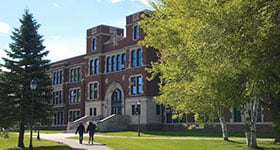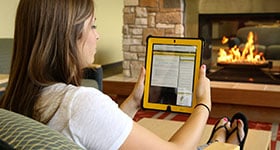Teachers recognize that moment when their students tune out and they may as well be speaking a foreign language. The glazed eyes, the yawns, the fidgeting and murmuring — these are signs that their students are no longer engaged. Although every moment in the classroom can’t be filled with energy, excitement and eureka moments, many teachers are finding that student-centered learning engages, challenges and energizes students in ways that traditional learning models do not.
Student-centered learning is a learning model with a flexible definition, depending on the school, the teacher, and the age and needs of the students, but it is basically a personalized approach to learning where students are involved in what they learn and how they learn it.
For example, in Jenny Wellington’s English class at Pittsfield High School, students come up with their own questions for reading and they decide the format of the class. “The students are the ones telling me what works, and it’s going to be different for every class.” At Pittsfield, test scores and graduation rates have greatly improved. The program has been so successful on the high school level, that the district has expanded personalized learning to its elementary school.
It’s a Collaborative Effort
In a series of articles on promoting student-centered learning, education consultant John McCarthy says, “Teachers must become comfortable with changing their leadership style from directive to consultative — from ‘Do as I say’ to ‘Based on your needs, let’s co-develop and implement a plan of action.'”
When students are placed at the center of their own learning, they realize they have a voice in why, what and how learning experiences take shape. Their input helps them understand the relevance of what they are doing, and when they can choose the focus of content, they are much more engaged. In student-centered classrooms, students are included in planning, implementation and assessments.
What a Student-Centered Environment Looks Like
The teacher lecturing at the front of a classroom with students lined up in rows of desks may be effective for sharing some types of information, but a student-centered learning environment will look quite different.
One of the goals of student-centered learning is to make learning joyful, challenging and engaging. In the physical environment there are spaces for individual, collaborative team and large group work, and student work is visible in classrooms, hallways and online. Culture and environment reflect the student and staff diversity, and students have ownership in their learning. Students’ ideas and voices are front and center in student-centered learning environments.
One parent of an 8-year-old shared that her son was “so frustrated that he was melting down” in his classes. Once personalized learning was implemented in his school, he gained confidence and was able to maintain focus. “There’s just something different about the dynamic of that classroom and the way they are teaching.”
How Successful Is Personalized Learning?
According to a report from the RAND Corporation about a long-term study commissioned by the Bill and Melinda Gates Foundation, which examined 11,000 students in 62 public school districts, schools that use “personalized learning” have higher rates of student success than those that do not. “Growth in mathematics and reading over two years exceeded that of a comparison group, overall and in a majority of schools.”
Personalized learning was defined as “tailoring instruction to individuals’ needs, skills and interests” including “a variety of learning experiences that prepare students for college and career” in which teachers manage the learning environment, “leading instruction and guiding students to take ownership of their learning.”
The study found that schools with the greatest achievement gains “reported strong implementation of student grouping strategies driven by data and responsive to student needs; provision of data to students and including them in discussions of the data; and learning spaces that support personalized learning strategies.”
Learn more about the UW-Superior online MS Ed. in Instruction program.
Sources:
NPR: When the Focus Is on the Student, Not the Class
Edutopia: Student-Centered Learning: It Starts With the Teacher
GettingSmart.com: 8 Things to Look for in a Student-Centered Learning Environment
The Hechinger Report: Do Custom-Fit Lessons Help Students Succeed?
RAND Corporation: Promising Evidence on Personalized Learning


